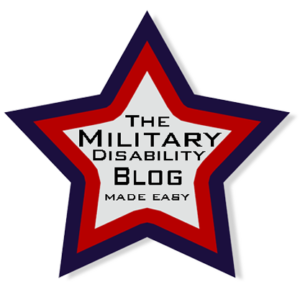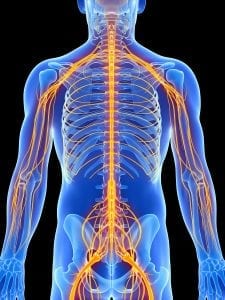On March 20, 2025, we will stop accepting new Military Disability Made Easy subscriptions. For more information about how this change may impact your subscription, click here
Rating Myositis for DoD and VA Disability
- Published:
- Last Updated: October 4, 2022

Myositis is a condition where the muscles swell, causing weakness and often pain. Myositis can be caused by medications, medical conditions like cancer, etc., but in the majority of cases, the cause is unknown.
Before discussing rating options, it should be noted that in addition to general myositis, there are a few specific types of myositis that present with special symptoms.
- Polymyositis affects numerous muscles all over the body, and in its severe form, can lead to other serious condition such as difficulty swallowing, lung disease, and heart disease.
- Dermatomyositis is similar to polymyositis but it also includes the skin, causing rashes along with the muscle weakness and other symptoms.
- Inclusion-body myositis is very similar to polymyositis. There are, of course, differences, but they are pretty technical and aren’t relevant to ratings, so we won’t get into the medical jargon here.
On to the ratings.
The VASRD code for Myositis is code 5021. For most cases of myositis, regardless of type, this will be the main code assigned. Code 5021 is rated on limited motion of the affected joints. So if the condition causes limited motion of the elbow and knee, then two ratings will be given: one for limited motion of the elbow, and one for limited motion of the knee.
Now as mentioned above, myositis can cause many other symptoms in addition to limited motion, like skin rashes and heart disease. In cases where there are symptoms other than limited motion that cause significant impairment, they can be rated separately.
For example, let’s say Shawn has dermatomyositis. His symptoms include rashes around his eyes and on his neck, weakness in the shoulders that limits his ability to raise his arms, and supraventricular arrhythmia (a heart condition).
Of these symptoms, only the shoulders will be rated under code 5021 (the code for myositis) since those are the only joints that have limited motion. As both shoulders are affected, he will then receive two ratings under code 5201 for limited motion of the shoulder. Next, Shawn’s rashes will be rated as psoriasis under code 7816. And finally, his arrhythmia will be rated under code 7010 for supraventricular arrhythmia.
In total, Shawn will receive 4 separate ratings for his dermatomyositis: shoulder, shoulder, skin, heart. The final codes for these ratings will look like this:
5021-5201: left shoulder limited motion
5021-5201: right shoulder limited motion
5021-7816: psoriasis
5021-7010: supraventricular arrhythmia
The hyphenated codes are used to define the condition properly. The first four digits defines the condition as myositis, and the second indicates how it is rated (limited motion of the shoulder, psoriasis, etc.). See Analogous Ratings for more info.
So ultimately when rating myositis, additional ratings can be given for each separate symptom caused by any type of myositis as long as none of the symptoms are rated more than once (the Pyramiding Principle).
Recent Posts
TDRL vs. PDRL—Which is better for disability benefits?
February 13, 2025
Leukemias and Multiple Myelomas NOW on the Presumptive List
January 9, 2025
Two MORE Conditions added to the Burn Pit Presumptive List
January 3, 2025
The 2025 VA Disability Rates are here!
December 2, 2024
About Us










8 Comments
DISPLASTIC HIP WITH, HIP SWELLING W/PAIN, KNEE SWELLING W/PAIN, BACK PAIN, ANKLE SWELLING W/PAIN, CANT SIT FOR LONG TIME OR STAND FOR LONG TIME. WHAT WILL THIS DISPLASTIC HIP BE RATED UNDER.
Hi Kennon –
A displastic hip is a developmental condition that would be considered EPTS (existed prior to service) and not eligible for disability unless it is service aggravated:
http://www.militarydisabilitymadeeasy.com/epts.html
If it is service-aggravated, then it will be rated on limited motion.
This is the same for all of your conditions. As long as they are service-connected, they'll each be rated on limited motion of that joint:
http://www.militarydisabilitymadeeasy.com/hipandthigh.html#lim
http://www.militarydisabilitymadeeasy.com/kneeandleg.html#limo
http://www.militarydisabilitymadeeasy.com/theankle.html#joint
http://www.militarydisabilitymadeeasy.com/thespine.html#conditions
Inclusion Body Myositis (IBM) is a condition that causes muscles to become thin and weak. Treatment for Inclusion Body Myositis is to boost muscle growth. One way to do this is to interfere with the mechanisms naturally present in the muscle that put the brakes on muscle growth so that muscles remain within the normal size range.
I served in the military, from 1980-1986,4 years active /inactive reserve,while active I was working with a patient and was exposed ,to TB,while getting tested,I was given an overdose of the vaccine,I was in Germany at the time,and was never treated,2014 I was diagnosed with dermatomyositis, I could no longer work started receiving SSD,wasn't able to get VA disability,because they said they couldn't prove it was military related,my infection disease doctor wants to start me on TB medication, which is too risky for mewith my compromised immune system,my Rheumatologist and dermatologist said I have a severe case,I read where there was cases where people have gotten dermatomyositis after receiving tb vaccine. I would appreciate any information you can provide.
Unfortunately, there is not much medical proof that the TB vaccine can cause dermatomyositis. There are some articles suggesting a connection, but no official test results proving one. Because of this, the VA is unlikely to grant service-connection. They are required by law to have definitive proof, and the limited articles out there are not definitive. There are a few lawyers that deal with cases of dermatomyositis caused by vaccines, but they aren't specific to veterans. May be worth the time to talk to them about your case, however. They may have access to additional evidence not readily available to the public.
Good information. Thanks. Bill
Can Myositis (weakness in the legs) be related to the contaminated water at Camp Lejeune?
Myositis is not on the VA's Presumptive List for Camp Lejeune Water exposure, so there is little medical evidence that it is related. However, if you can show plentiful proof that the water was more likely than not the cause in your case, the VA could still rate it.
https://militarydisabilitymadeeasy.com/vapresumptivelist.html#lejeune